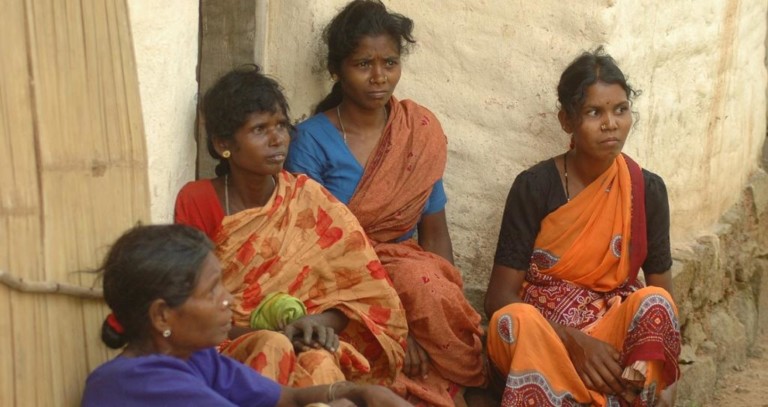 NEW DELHI: Tribals account for 30 per cent cases of malaria in India and non-communicable and lifestyle diseases are now major health problems facing them, according to a government study. The comprehensive analysis of tribal health, by an expert committee constituted by the ministries of health and tribal affairs in 2013, also revealed that an “unacceptably high” number of tribals suffer from malnutrition.
NEW DELHI: Tribals account for 30 per cent cases of malaria in India and non-communicable and lifestyle diseases are now major health problems facing them, according to a government study. The comprehensive analysis of tribal health, by an expert committee constituted by the ministries of health and tribal affairs in 2013, also revealed that an “unacceptably high” number of tribals suffer from malnutrition.
The health status of Scheduled Tribes has significantly improved over the last 25 years, and “yet, it is the worst when compared to other social groups”, it said. The committee, which submitted the report to the government recently, was tasked to review the existing health situation in tribal areas, formulate strategic guidelines for states and make recommendations on the requirement of additional resources.
It said there is a near complete absence of data on the health situation of different tribal communities. In the absence of a comprehensive health picture of tribal health in the country, policy measures and government programs are often ad-hoc. The panel relied on data from the 2011 Census, National Family Health Survey (NFHS), National Sample Survey Organization (NSSO), studies conducted by civil society, and a study by the National Institute of Research in Tribal Health.
“Geographical isolation, poor implementation of policies and lack of adequate resources have been responsible for the poor health status of the tribal population,” the 12-member panel, headed by Magsaysay awardee and rural health expert Dr Abhay Bang, said. The committee found that tribal people, who constitute 8.6 per cent of the country’s population, suffer from a triple burden of diseases. “While malnutrition and communicable diseases such as malaria and tuberculosis continue to be rampant, rapid urbanization, environmental distress, and changing lifestyles have resulted in a rise in non-communicable diseases such as cancer, hypertension, and diabetes.
To add to this is the third burden of mental illness,” the report read. Scheduled Tribes (ST) fair poorly in almost all key health parameters, including infant mortality, under-five mortality, and immunization coverage, according to the assessment. “Despite high rates of infant and child mortality in tribal areas and the heavy burden of diseases, full immunization coverage remains constantly low among the ST population across states,” the committee said. The estimated infant mortality rate (IMR) among tribal people is somewhere between 44 to 74 per 1,000 live births.
The under-five mortality rate has reduced by nearly 60 per cent, but the gap with favorable social groups has widened, it said. According to the National Family Health Survey conducted in 2014, the tribal infant mortality rate was 38 per cent, more than “others” (other than ST, Schedule Castes and Other Backward Classes), it said. Malnutrition – stunting among children and low body mass index among adults – in tribal people is “unacceptably high”.
The intake of various nutrients such as proteins, calories, and vitamins has decreased in tribals in the last decade, according to the expert committee. “Only about 29-32 per cent of children of different age groups and 63-74 per cent among adult men and women were consuming diets that were adequate in both protein and energy,” it pointed out. The prevalence of underweight is almost one and half times in tribal children that in other castes.
The panel said alarmingly, almost 50 per cent tribal girls aged 15 to 19 years are underweight or have a body mass index of less than 18.5. NFHS data showed the 65 per cent of tribal women in the age group of 15-49 years suffer from anemia. The committee pointed out that currently, there is no single source of data available to create a country-wide disease burden.
Therefore, there is no system for regular data collection of morbidity in tribal areas, it said “An analysis of the NSSO 2014 data revealed that the reported proportion of fever, tuberculosis, vector-borne diseases, blood, and respiratory ailments is the highest among the STs when compared to other population groups,” it said.
“Historically it has been believed that tribal populations do not suffer from non-communicable diseases like cancer, diabetes, hypertension, and cardiovascular ailments, primarily due to their proximity to nature, healthy food habits and lack of stress.”However, there is evidence of an early epidemiologic transition in tribal areas and an associated increase in the incidence of non-communicable diseases,” the report said.
According to a study, one out of every four adults suffered from hypertension, it said. It said tribal communities account for about 30 per cent of all cases of malaria and 50 per cent of deaths due to the disease. The prevalence of tuberculosis in the tribal population was 703 per one lakh compared to 256 per lakh in the rest of the country.
Life expectancy among tribals, as assessed by a Lancet study in 2016, was 63.9 years while it was 67 years for the general population. The report said the Rural Health Statistics (RHS) reveal a huge gap in the health infrastructure and resources in tribal areas due to serious geographical and socioeconomic challenges. It said access to health services becomes difficult as the “roads are poor or restricted”. The committee recommended that the government focus 70 per cent of its resources for tribal health on provisions of primary care in tribal areas. PTI







